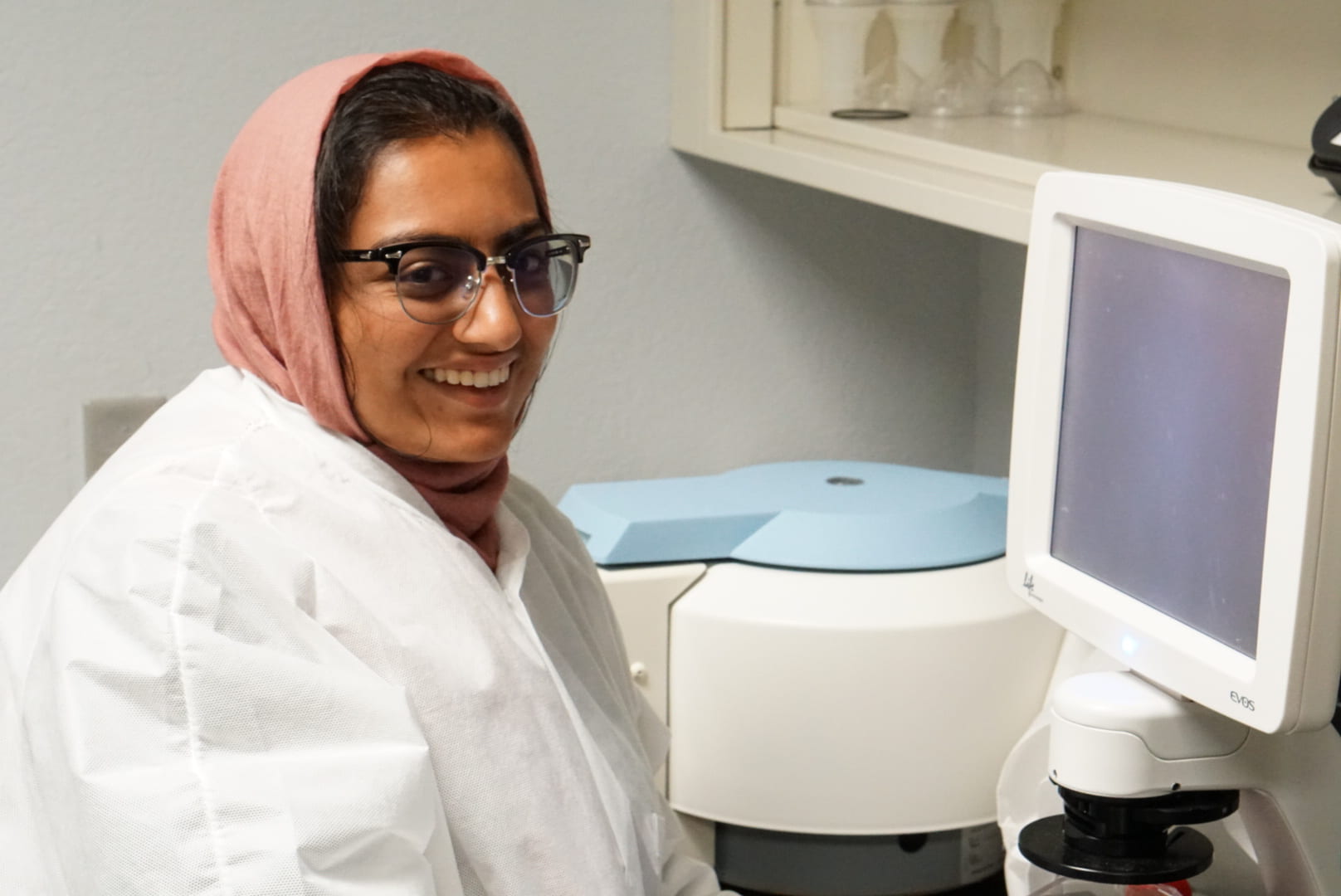In 2019, biomedical engineering major Samia Ismail earned a coveted Truman Scholarship, awarded to the brightest students in the nation dedicated to public service. Even though she is earning an engineering degree, Samia ultimately plans to pursue a joint M.D./master of public health degree, and become a practicing physician and healthcare policy advisor to legislators and executive officials. She has her sights set on the Arkansas Minority Health Commission, but first, she has accepted a policy research fellowship at the Federal Office for Rural Health Policy in the Department of Health and Human Services in Washington, D.C., where she will help research the most efficient ways for implementing certain federal health policies.
For her honors thesis project, Samia worked with Dr. Raj Rao in his cellular and tissue engineering lab. Dr. Rao’s work focuses on methods for extracting stem cells from patients, differentiating them into smooth muscle cells, and reinserting them into the body to repair tissue damage, such as that caused by heart attacks or cardiovascular disease. Samia’s own research, for which she was awarded an Honors College Research Grant, furthers this goal by comparing the genetic expression of stem cells to that of the smooth muscle cells into which they are transformed.
“I’m comparing their genomes to make sure that those two cell types are completely different from one another,” she explained; “that, for instance, they’re not halfway differentiating to smooth muscle cells and then just giving up, and that their genotype and phenotype are in fact matching what real smooth muscle cells look like.”
In order to measure the extent of the differentiation, Samia sequenced the RNA in the cells, because, she said, “in the genetic system in your cells, when your DNA becomes transcribed into RNA, the cell only transcribes the genes that it needs; that RNA is then translated into proteins. When we look at the RNA content in the cells, we can see what genes are being expressed and used in the cells.”
In other words, smooth muscle cells will express a genome sequence specific to their function; stem cells will have an entirely different genome sequence because they have an entirely different function. By measuring the differences in the genetic expression between the two types of cells, Samia is able to provide data on the stem cells’ ability to transform into whole, functioning smooth muscle cells, viable for reinsertion into a patient.
Samia is only partway through analyzing her data, but, she says, the results so far are promising. She has found that even in “quality control” specimens, the smooth muscle cells consistently have a much lower concentration of RNA than the original stem cells. “This doesn’t tell us much, but it tells us that we’re on the right path,” she said. “There’s a different amount of DNA expression going on in these two cells, which means that they are definitely differentiating different types of genes and different amounts of RNA. So there is a significant change.”
Samia loves the work she’s doing with cellular and genetic engineering, and says this passion is what gets her through the difficult stretches. “Make sure you’re doing research in something you’re fundamentally very interested in and curious about,” she advises, “because it’s a lot of work. It’s okay to keep looking until you find something that you’re really passionate about, because you need that passion if you’re going to be doing something so demanding. And it’s definitely worth it in the end.”


